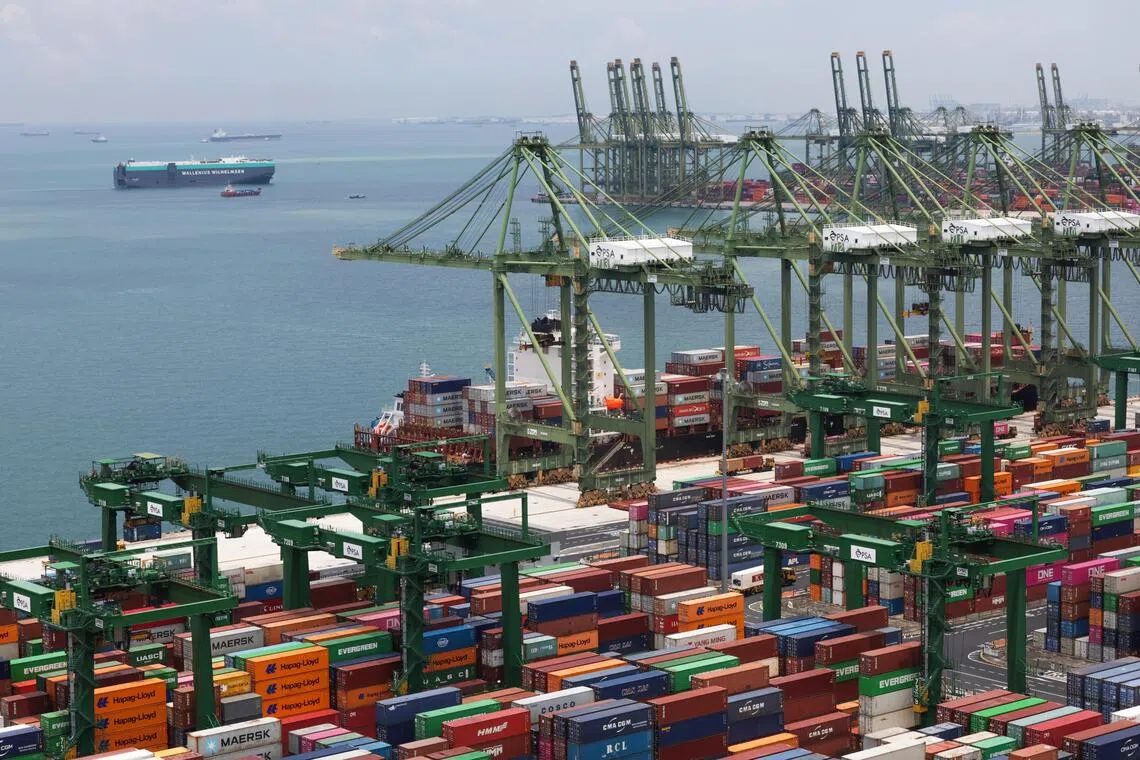ADB slashes 2026 growth forecast for Singapore by nearly half to 1.4% on US tariff hit
Sign up now: Get ST's newsletters delivered to your inbox

ADB said additional US tariffs on pharmaceuticals and semiconductors would mostly affect South-east Asia, with the former primarily hitting Singapore.
PHOTO: ST FILE
Follow topic:
SINGAPORE - Singapore and Thailand saw the steepest downgrades when the Asian Development Bank (ADB) trimmed its growth projections for South-east Asian economies.
The downward revisions reflect persistent global growth deceleration, heightened trade uncertainty and domestic challenges, said the multilateral development bank on Sept 30 in an update to its flagship outlook report published every April.
ADB also expects the boost from the tariff front-running, which buoyed the region’s exports in the first half of 2025, to evaporate.
As a whole, South-east Asia is now expected to grow 4.3 per cent in 2025 and 2026, compared with an estimate of 4.7 per cent for both years made in April.
Singapore: Outsized blow from US tariffs
ADB expects Singapore’s 2025 growth to come in at 2.5 per cent, down from an earlier estimate of 2.6 per cent, compared with economic growth of 4.4 per cent in 2024. The Government’s own forecast is at 1.5 to 2.5 per cent, updated in August from an earlier 0 to 2 per cent.
The Republic faced a much steeper cut for 2026, with ADB slashing its forecast to 1.4 per cent from 2.4 per cent. Private economists in a survey by the Monetary Authority of Singapore in September projected growth of 1.9 per cent.
Despite a robust first half, ADB believes that economic growth will moderate into the year as expansion slows in outward-oriented sectors, such as wholesale trade, transportation and storage. Such impacts from US tariffs will weigh even more heavily on Singapore’s economy in 2026.
ADB principal economist John Beirne said in a press briefing in response to questions by The Business Times: “The extent of external demand due to the tariffs has been the major factor behind our downward revision in the case of Singapore.”
He continued: “This has been more than we had anticipated earlier, and the factor behind this is really related to the share of final demand accounted for by Singapore relative to the US.”
The report also noted that additional US tariffs on pharmaceuticals and semiconductors would mostly affect South-east Asia, with the former primarily hitting Singapore.
On how the latest US pharmaceutical duties announced on Sept 25 shape the region’s outlook, Mr Beirne replied: “Overall, despite the extent of the tariffs, we would see that the exemptions in place and the nature of the tariffs in terms of scope would mean that the impact on South-east Asia and the region overall would be very, very marginal.”
Trade-related inflationary pressures are also clouding US monetary policy, noted ADB, and such uncertainty could increase financial market volatility and destabilise capital flows, which would hinder financing and investment.
As for Thailand, ADB now expects its growth in 2025 to slow 2 per cent, down from an earlier forecast of 2.8 per cent.
For 2026, ADB cut its Thai growth forecast to 1.6 per cent from an earlier estimate of 2.9 per cent.
Vietnam is the only South-east Asian economy that saw an improvement in its 2025 growth forecast to 6.7 per cent from ADB’s earlier April forecast of 6.6 per cent.
The country notched a multi-year-high gross domestic product growth of 7.52 per cent in the first half of 2025, driven by robust exports, strong improvement in the manufacturing and services sectors, as well as a surge in foreign direct investment disbursements.
For 2026, growth is expected to moderate to 6 per cent, down from an earlier estimate of 6.5 per cent.
ADB expects Vietnam’s economy to remain resilient, supported by expansionary fiscal and monetary policies that have boosted domestic consumption.
That said, weaker manufacturing and exports from US tariffs may curb demand for logistics, finance and business services.
And if trade tensions persist – clouded by uncertainty over transshipment tariffs – investment could slow and constrain growth in high-value service industries in 2026, said ADB. THE BUSINESS TIMES

